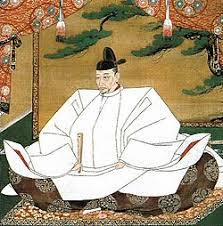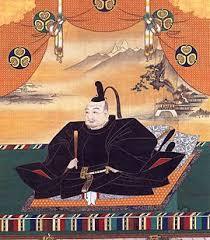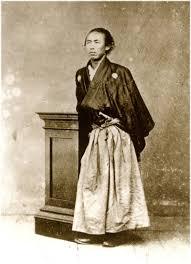京都観光 おすすめ 京都の歴史② History of Kyoto②
京都観光 おすすめ 京都の歴史 安土桃山時代の京都

室町幕府が衰退し戦国時代に入りますが、まず天下を盗ったのは織田信長。しかし本能寺の変で明智光秀に討たれてしまいます。明智光秀の三日天下のあとに天下人となったのが豊臣秀吉です。応仁の乱や戦国時代を通して一時期衰退した京都の町も豊臣秀吉の都市改造計画のおかげで復興をとげます。
The Muromachi Shogunate declined and entered the Sengoku period, but it was Oda Nobunaga who stole the world first. However, it is avenge by Mitsuhide Akechi by the Honnoji Incident . It is Toyotomi to have become a world person after mitsuhide Akechi’s third day of the world. The town of Kyoto, which declined for a while through the Onin War and the Sewar Period, also recovered thanks to Toyotomi Hideyoshi’s urban remodeling plan.
聚楽第、方広寺大仏殿、三条大橋、お土居、寺院街(寺町通と寺之内通)の建築を矢継ぎ早に行いました。次いで関ヶ原の合戦に勝利した徳川家康は二条城の築城を開始しました。また伏見に銀座をひらき、高瀬川を開削し大阪と京都を船で結ぶことに成功しました。
The construction of Jurakudai, Hokoji Daibutsuden, Sanjo Ohashi Bridge, Odoi, and Temple Street (Teramachi-dori and Teranouchi-dori) was carried out quickly. Next, Ieyasu Tokugawa, who won the battle of Sekigahara, started the castle building of Nijo Castle. In addition, he opened Ginza in Fushimi, opened the Takase River, and succeeded in connecting Osaka and Kyoto by boat.
現在の京都で安土桃山時代をしのぶことの出来る史跡は数多く残っています。聚楽第は当時をしのぶものは残っていませんが、聚楽第の遺構と伝えられるものが多数あります。大徳寺の唐門は代表的なものです。方広寺大仏殿跡は豊国神社本殿裏に緑地公園が整備されています。当時は東大寺の大仏殿をしのぐ規模でしたが、地震で倒壊。木造で再建されるも消失してしまいます。現在の方広寺には大仏は存在しませんが、大阪冬の陣の発端となった「国家安康」の鐘があります。お土居は当時は軍事的な城壁の機能と鴨川の氾濫から市街地をまもる防災施設としての機能をもちあわせていました。
There are still many historical sites in Kyoto that can survive the Azuchi-Momoyama period. There are many things that are said to be the remains of jurakudai, alums there are no things left over from that time. The Karamon gate of Daitoku-ji Temple is representative. The ruins of The Great Buddha Hall of Houkuoji Temple have a green space park behind the main shrine of Toyokuni Shrine. At that time, it was the scale that oversteed the Great Buddha Hall of Todaiji Temple, but it collapsed due to an earthquake. It is rebuilt in wood but disappears. There is no Great Buddha in the present Houkou-ji Temple, but there is a bell of “Kokkaankou” which was the start of the Osaka winter camp. At that time, Odoi had the function as a disaster prevention facility which protected the urban area from the flood of a military rampart and the Kamogawa River.
京都観光 おすすめ 京都の歴史 江戸時代の京都

二条城は徳川家康が征夷大将軍の宣下を受けるに際してその居館として築かれたものです。徳川幕府の儀典の場として利用され、大阪冬の陣や大阪夏の陣では軍議の場となりました。三代将軍徳川家光の時代に二の丸御殿等できあがりましたが、その後衰退の一途をたどり、最後の将軍徳川慶喜の時代に大政奉還の舞台となりふたたび世間の脚光をあびることになりました。
Nijo Castle was built as its home when Ieyasu Tokugawa received the declaration of The Great General Shogun. It was used as a place of etiquette of the Tokugawa shogunate, and it was a place of military assembly in Osaka winter camp and Osaka summer camp. The second round palace etc. were completed in the age of the third shogun Iemitsu Tokugawa, but after that, it continued the decline, and it became a stage of the restoration of the great government in the age of the last shogun Yoshinori Tokugawa, and the public limelight was put up again.
織田信長、豊臣秀吉、徳川家康のそれぞれの時代に主要な京都の建物は改築がおこなわれました。京都御所はその代表的なもので、1620年の東福門院和子(徳川和子)の後水尾天皇への入内にあわせて大規模修繕工事がおこなわれました。後水尾天皇は幕府の朝廷圧迫政策を不満とし隠棲の地を求め修学院離宮を造営されました。修学院離宮とならぶ代表的な山荘である桂離宮も江戸時代前半に造営されました。桂離宮の違い棚は「桂棚」とよばれ、修学院離宮の「霞棚」、醍醐寺の「醍醐棚」とともに「天下の三大名棚」としてしられています。一見の価値はあります。
Major Kyoto buildings were renovated during the periods of Oda Nobunaga, Toyotomi Hideyoshi, and Tokugawa Ieyasu. The Kyoto Imperial Palace is a representative of this, and a large-scale repair work was carried out in conjunction with the entrance of Kazuko Toufukumonin (Kazuko Tokugawa) to Emperor Gomizunoo in 1620. Emperor Gomizunoo was dissatisfied with the shogunate’s imperial court pressure policy and built a Shugakuin imperial Villa in search of a place of hiding. Katsura Imperial Villa, a representative mountain villa along with Shugakuin Imperial Villa, was also built in the first half of the Edo period. The difference shelf of Katsura Imperial Palace is called “Katsura shelf”, and it is called “three great famous shelves of the world” along with “Kasumi shelf” of Shugakuin imperial Villa and “Daigo shelf” of Daigo-ji Temple. It’s worth a look.
京都観光 おすすめ 京都の歴史 幕末維新の京都

1853年のペリー提督の浦賀来航を契機に尊王攘夷思想は急激な広がりを見せ倒幕論と合体します。1858年の日米修好通商条約の締結、安政の大獄、桜田門外の変と国内情勢は一変しました。その渦中で京都は倒幕・佐幕両派の構想の舞台となり、尊攘派による暗殺が横行しました。
With Admiral Perry’s Uraga in 1853, a movement advocating reverence for the Emperor and the explosion of foreigners spread rapidly and combined with the theory of overthrow. The conclusion of the Japan-U.S. Treaty of Amity and Trade in 1858, the great prison of Ansei, the sakuradamon incident , and the domestic situation changed completely. In the midst of this, Kyoto became the stage for the conception of both the overthrow and a movement advocating the Emperor and the explosion of foreigners, and assassinations by the arrogant factions were rampant.
一方尊攘過激派の取り締まりにあたる「新選組」が京都守護職の松平容保のもとに結成されました。池田屋事件により打撃を受けた長州藩は大軍を率い上洛し幕府軍と激戦を行いました。(蛤御門の変)この後、坂本龍馬の仲介により薩長同盟が成立し大政奉還が実現されました。
On the other hand “Shinsen-gumi”, which is a crackdown on extremists, was formed under The Kyoto Guardian’s Matsudaira Yoho. The Choshu domain, which was hit by the Ikedaya incident, led a large army and fought hard against the Shogunate army. (Hamaguri-Gomon Incident) After this, the Satsuma-choshu alliance was established through the mediation of Ryoma Sakamoto, and the restoration of the Great Government was realized.
しかし坂本龍馬は近江屋で暗殺され、過激派公卿の岩倉具視や西郷隆盛や桂小五郎らは徳川家を武力で滅ぼそうとし、やがて鳥羽伏見の戦いに発展し、五稜郭の戦いまで内戦が続きました。当時の面影が残る史跡は数多く存在し今も多くの人が訪れます。
However, Ryoma Sakamoto was assassinated in Omiya, and the extremist lords Iwakura Tomomi, Saigo Takamori and Katsura Kogoro tried to destroy the Tokugawa family by force, and eventually developed into the Battle of Toba Fushimi, and the civil war continued until the Battle of Goryokaku. There are many historical sites that remain in the state of the time, and many people still visit.
関連する投稿
- 鬼滅の刃 京都と鬼の関係 歴史秘話ヒストリアで紹介されました Demon Blade Relationship between Kyoto and Demon
- 鬼滅の刃 京都と鬼の関係 所JAPANで紹介されました Demon Blade Relationship Kyoto and Demon
- 京都新城 所JAPANで紹介されました
- 京都観光 おすすめ 京都の歴史① History of Kyoto①
現在の記事: 京都観光 おすすめ 京都の歴史② History of Kyoto②






